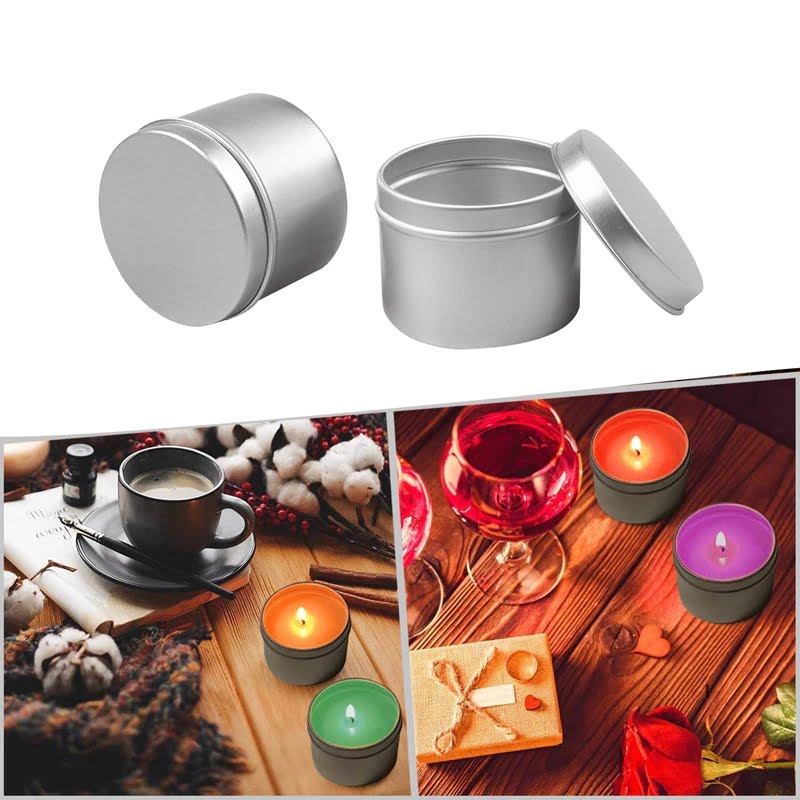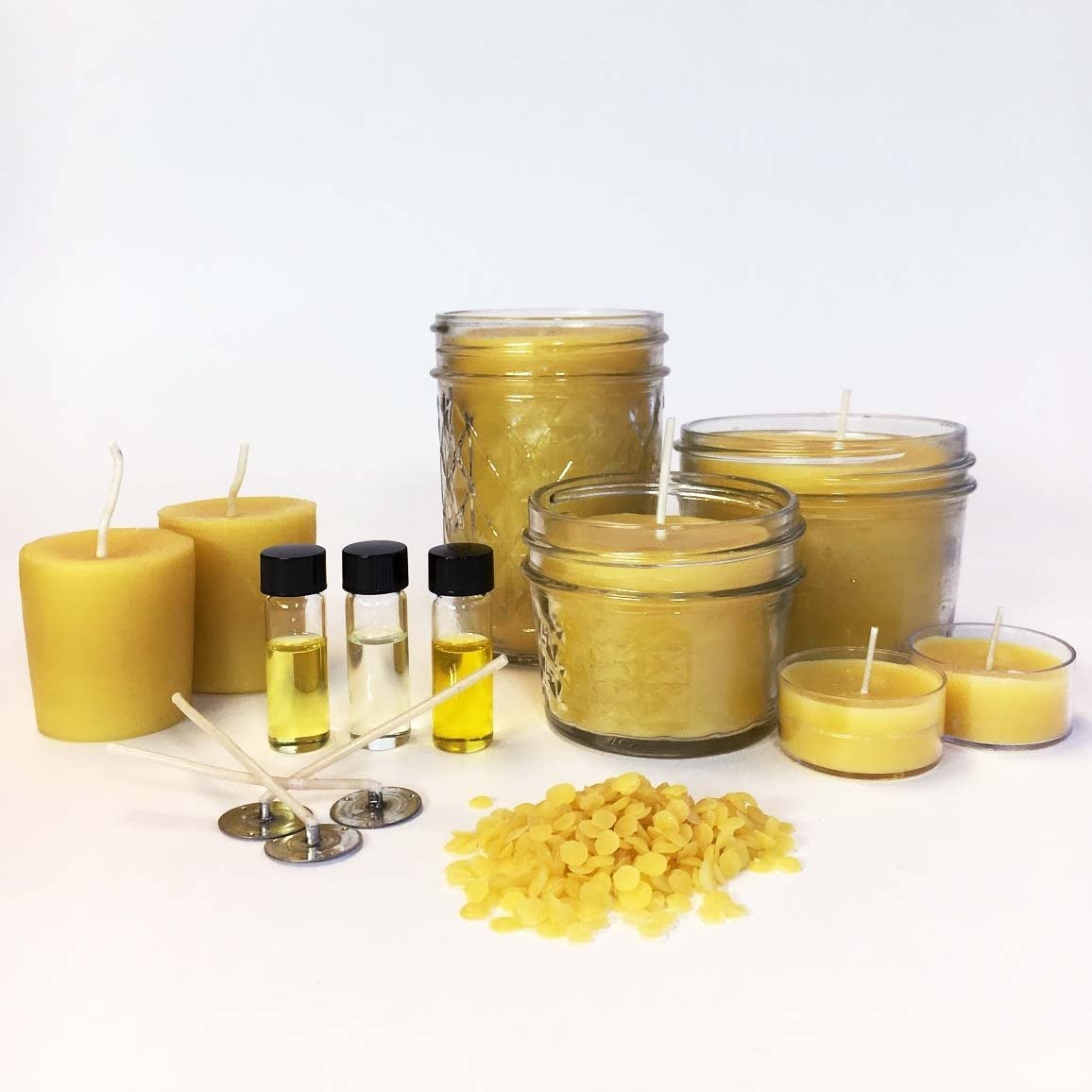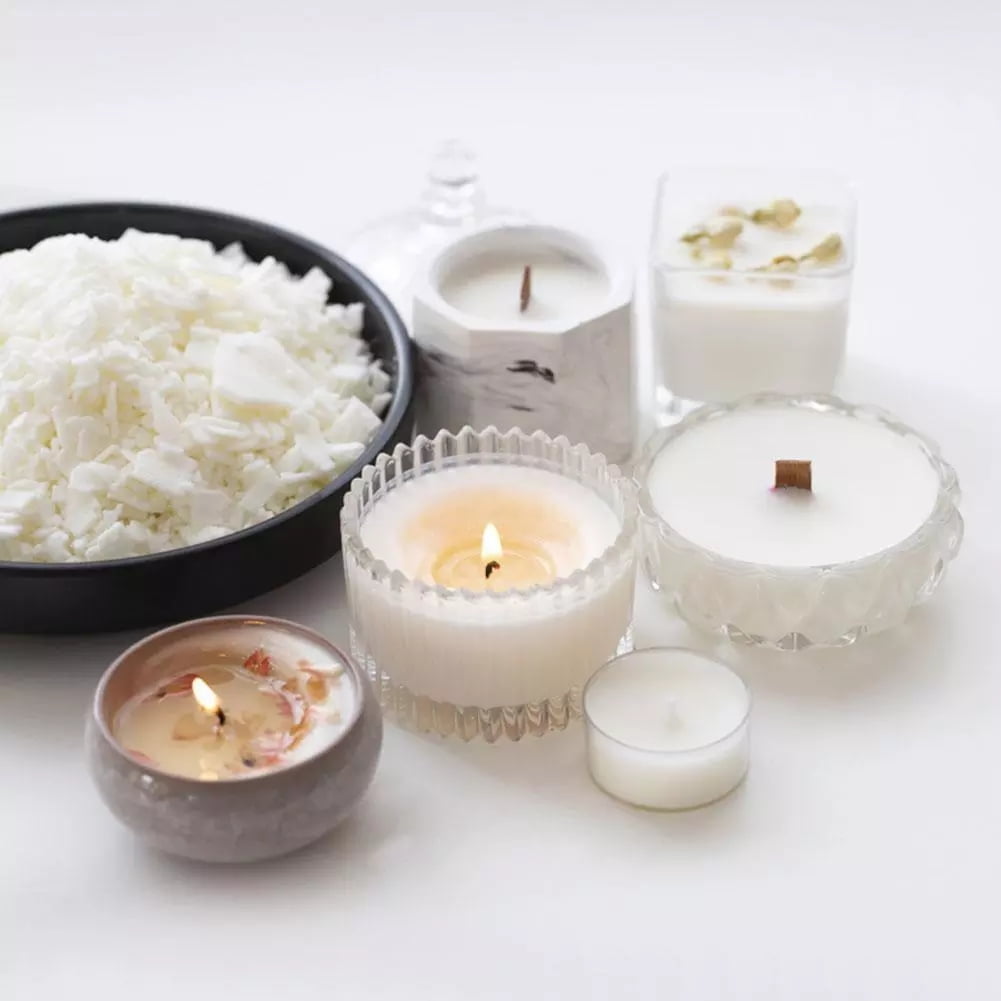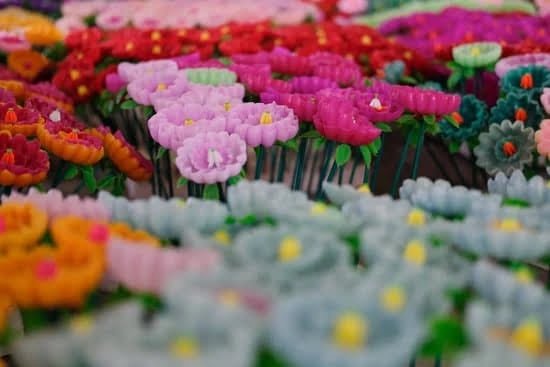Are you wondering, “Can I use essential oil in candle making?” The answer is yes. Essential oils are a popular and natural choice for adding fragrance to candles. In this article, we will discuss everything you need to know about incorporating essential oils into your candle making process.
Essential oils have been used for centuries for their aromatic and therapeutic properties. When combined with candle making, they can create a beautifully scented and calming atmosphere in your home. Whether you are a beginner or experienced candle maker, using essential oils can elevate the quality of your candles.
In this comprehensive guide, we will explore the benefits of using essential oils in candle making, the different types of essential oils that can be used, how to properly mix them with candle wax, safety guidelines to consider, tips for choosing the right essential oils, and creative ways to use them.
Whether you are looking to customize your own signature scent or simply incorporate natural fragrances into your candles, essential oils are a versatile and delightful addition to any candle maker’s toolkit.
The Benefits of Using Essential Oils in Candle Making
Essential oils are highly concentrated plant extracts that are known for their aromatic and therapeutic properties. When used in candle making, these oils can enhance the overall experience of burning a candle by providing a natural and soothing fragrance. The use of essential oils in candles adds an extra layer of benefits compared to synthetic fragrances, making them a popular choice for individuals looking for a more natural and holistic approach to aromatherapy.
One of the main benefits of using essential oils in candle making is the ability to customize scents according to personal preferences. With essential oils, you have a wide range of options to choose from, including floral, citrus, woody, and herbal scents.
This allows you to create unique and personalized candles that cater to your specific scent preferences or therapeutic needs. Additionally, as essential oils are derived from natural sources, they add a touch of nature into your living space, promoting a sense of calm and relaxation.
Furthermore, unlike synthetic fragrances that can contain potentially harmful chemicals, using essential oils in candle making avoids the exposure to such toxins. Many people prefer using natural products that do not emit harmful compounds when burned, making it a safer option for indoor air quality. As long as they are used properly and in recommended quantities, essential oil-infused candles can provide a safe and natural way to enjoy pleasant fragrances at home.
| Benefits | Details |
|---|---|
| Customization | Essential oils allow customization according to personal preferences |
| Natural Source | Essential oils add a touch of nature into living spaces promoting calmness and relaxation |
| Safety | Avoiding exposure to potentially harmful chemicals makes them safer for indoor air quality |
The Different Types of Essential Oils That Can Be Used in Candle Making
When it comes to using essential oils in candle making, there are a wide variety of options to choose from. Many different types of essential oils can be used to create beautifully scented candles that can bring a sense of calm or invigoration to any space. Whether you prefer floral, citrus, herbal, or woodsy scents, there is an essential oil that can suit your preferences and needs for candle making.
Popular Types of Essential Oils
Some popular types of essential oils that are commonly used in candle making include lavender, eucalyptus, lemon, peppermint, vanilla, and sandalwood. Each of these oils offers unique aromatic properties that can help set the mood for relaxation, focus, or energy depending on the desired effect. Additionally, essential oils like cedarwood and patchouli are also popular options for those who enjoy earthy and grounding scents in their candles.
Custom Blends
In addition to using individual essential oils in candle making, many crafters also enjoy creating custom blends by mixing different oils together. This allows for a more personalized scent profile that cannot be achieved with single oils alone. For example, combining orange and clove essential oil creates a festive and warm aroma perfect for the holiday season. Experimenting with various combinations of essential oils can lead to discovering new favorite scents for candle making projects.
Considerations When Choosing Essential Oils
When selecting which essential oils to use in candle making projects, it is important to consider not only the scent but also any potential therapeutic benefits they may provide. For instance, some individuals may prefer using lavender or chamomile essential oil in their candles for their calming effects and ability to promote relaxation. On the other hand, peppermint or eucalyptus essential oil can create an invigorating atmosphere that helps with mental clarity and focus while burning the candle.
How to Properly Mix Essential Oils With Candle Wax
When it comes to incorporating essential oils into candle making, it’s important to know how to properly mix them with candle wax. This step-by-step guide will help you achieve the perfect blend of essential oils and wax for your homemade candles.
To properly mix essential oils with candle wax, follow these steps:
1. Choose your preferred essential oil: Select the type of essential oil that you want to use for your candles. Keep in mind the benefits and properties of each oil, as well as the scent you want to achieve.
2. Measure your ingredients: Once you’ve chosen your essential oil, measure the amount needed for the quantity of wax you are using. Typically, it is recommended to add about 1 ounce of essential oil per pound of wax, but this can vary depending on personal preference and the strength of the oil’s fragrance.
3. Heat the wax: Begin melting your candle wax using a double boiler or microwave. Make sure the wax reaches the proper temperature according to the manufacturer’s instructions. It is crucial to heat up your wax before adding any essential oils.
By following these simple steps, you can ensure that your essential oils are properly mixed with the candle wax, resulting in beautifully scented homemade candles that will enhance any space they are used in.
Safety Guidelines for Using Essential Oils in Candle Making
When it comes to using essential oils in candle making, safety should always be a top priority. While essential oils can add wonderful scents to your candles, they must be used with caution to avoid any potential hazards. Here are some important safety guidelines to keep in mind when using essential oils in candle making.
First and foremost, it is crucial to properly handle and store essential oils. They are highly concentrated and can be harmful if not used correctly. Essential oils should always be kept out of reach of children and pets, and they should be stored in dark glass bottles away from direct sunlight and heat.
Another important safety consideration when using essential oils in candle making is the proper dosage. It’s essential to follow the recommended usage rates for each type of essential oil. Using too much oil can affect the burning properties of the candle and may even pose a fire hazard. It’s always best to start with a small amount of oil and gradually increase the scent until you achieve the desired strength.
Proper ventilation is also key when working with essential oils in candle making. Since some essential oils can be potent and overpowering, it’s important to work in a well-ventilated area to avoid inhaling concentrated fumes. Additionally, wearing gloves and protective eyewear can help prevent any accidental skin or eye irritation while handling the oils.
Tips for Choosing the Right Essential Oils for Your Candles
When it comes to choosing the right essential oils for your candles, there are a few key factors to consider. Not all essential oils are created equal, and some may work better in candle making than others. Here are some tips for choosing the right essential oils for your candles:
1. Consider the Scent Profile: When selecting an essential oil for your candles, think about the scent profile you want to achieve. Some essential oils, such as lavender or vanilla, are known for their calming and soothing properties, while others like citrus or peppermint can create an invigorating and refreshing atmosphere.
2. Research the Benefits: Different essential oils have unique therapeutic benefits, so consider what specific effects you want to achieve with your candles. For example, eucalyptus and tea tree oils are known for their antimicrobial properties, making them great choices for candles intended to purify the air.
3. Test Before Use: It’s important to do a small test batch before incorporating any essential oil into a large batch of candle wax. This will allow you to assess how the scent develops over time and whether it complements the candle wax well.
Remember that not all essential oils are suitable for candle making. Some may have a low flash point or produce undesirable scents when burned. Always do thorough research on each oil before adding it to your candle-making process. Additionally, be mindful of any potential allergens or sensitivities that could be triggered by certain essential oils.
Creative Ways to Use Essential Oils in Candle Making
Custom Blends
One of the most creative ways to use essential oils in candle making is by creating custom blends. By combining different essential oils, you can create unique scents that are not available commercially. This allows you to tailor the scent of your candles to specific preferences or occasions. For example, you can mix lavender and vanilla for a relaxing and soothing aroma, or blend citrus oils for a refreshing and uplifting scent.
Layered Scents
Another creative technique is to create layered scents in your candles using essential oils. This involves adding different essential oils at various stages of pouring the wax into the container. For instance, you can start with a base layer of musk or sandalwood, followed by a middle layer of floral scents like rose or jasmine, and finish with a top layer of citrus or herbal aromas. This method creates a multi-dimensional fragrance experience as the candle burns.
Scented Wax Melts
In addition to making traditional candles, another creative way to use essential oils is by making scented wax melts. These are small, shaped pieces of scented wax that are melted in a warmer to release their aroma. Using essential oils in wax melts allows for endless possibilities when it comes to creating unique and personalized scents for your home. It’s also a great way to experiment with different combinations of essential oils without committing to a full-sized candle.
Using essential oils in candle making opens up a world of opportunities for creating one-of-a-kind scents that cater to individual preferences. From custom blends and layered scents to scented wax melts, there are many creative ways to incorporate essential oils into your candle making process.
Do keep in mind that proper measures must be taken when using essential oils in candle making due to some safety guidelines involved with their usage.
Conclusion and Final Thoughts on Using Essential Oils in Candle Making
In conclusion, the use of essential oils in candle making can enhance not only the scent but also the overall experience of burning candles. From promoting relaxation and stress relief to providing aromatherapy benefits, essential oils add a layer of complexity to homemade candles that simply cannot be replicated with synthetic fragrances. Additionally, the wide variety of essential oils available means that candle makers have endless options for creating unique and personalized scents for their products.
When using essential oils in candle making, it is important to follow safety guidelines and properly mix the oils with the wax to ensure a safe and effective burn. It is also crucial to consider the quality and purity of the essential oils being used to achieve the best results. By carefully selecting and blending different essential oils, candle makers can create custom scents that cater to specific preferences and moods.
Overall, incorporating essential oils into candle making opens up a world of possibilities for creating truly one-of-a-kind products. Whether you are looking to elevate your home décor or provide calming ambiance in a spa or wellness setting, essential oil-infused candles can offer an alluring sensory experience for both creators and users alike. So go ahead, experiment with different combinations of essential oils in your candle making endeavors – you may just discover your new favorite scent.
Frequently Asked Questions
Is It Safe to Put Essential Oils in Candles?
It is generally safe to put essential oils in candles, but it should be done carefully and in the correct proportions. Essential oils are highly concentrated, so using too much can lead to a fire hazard or an overwhelming scent.
It’s important to follow a proper recipe and ensure the essential oils are well blended with the wax to avoid any safety issues.
Is It Better to Use Fragrance Oil or Essential Oil for Candle Making?
When it comes to candle making, both fragrance oils and essential oils have their own advantages. Fragrance oils tend to offer a wider variety of scents and are often less expensive than essential oils.
On the other hand, essential oils are natural and can provide therapeutic benefits through aromatherapy. The choice between the two ultimately depends on personal preference and the desired outcome for the candles.
Can You Add Essential Oils to Melted Wax?
Adding essential oils to melted wax is a common practice when making scented candles. However, it’s important to do so at the correct temperature to ensure that the scent is evenly distributed throughout the wax.
The ideal temperature for adding essential oils is typically around 185°F (85°C), as this allows for proper blending without causing the oil to evaporate or degrade.

Welcome to my candle making blog! In this blog, I will be sharing my tips and tricks for making candles. I will also be sharing some of my favorite recipes.





